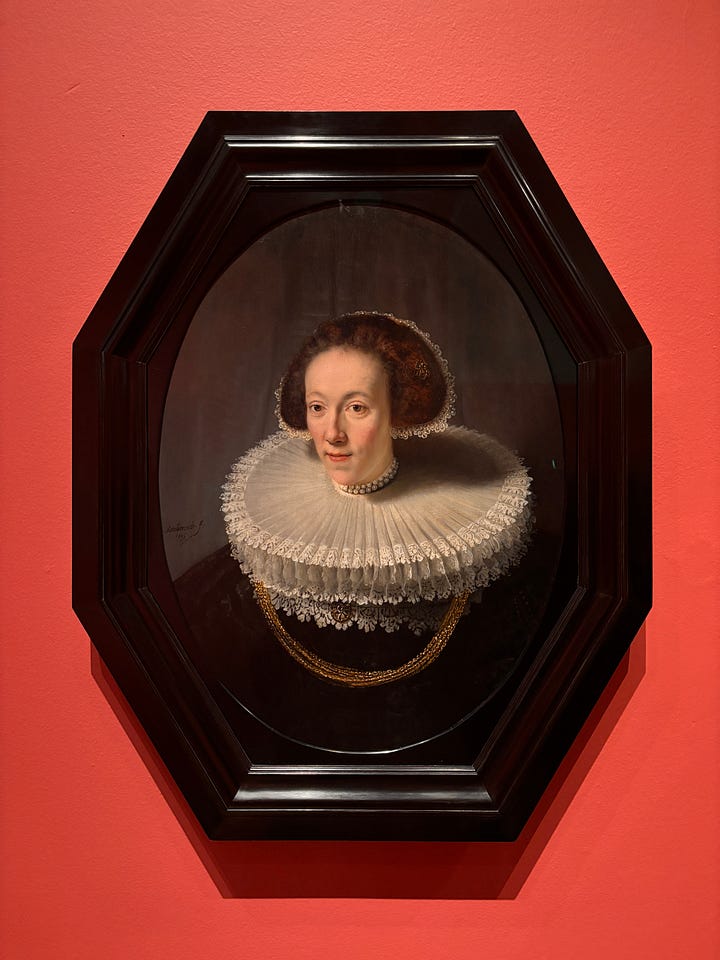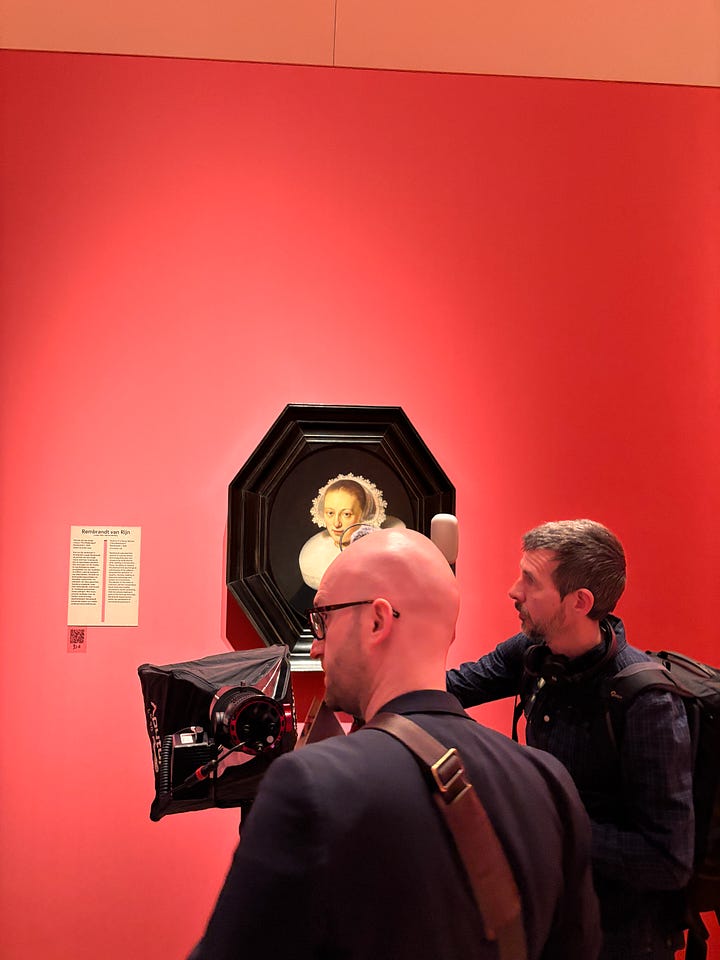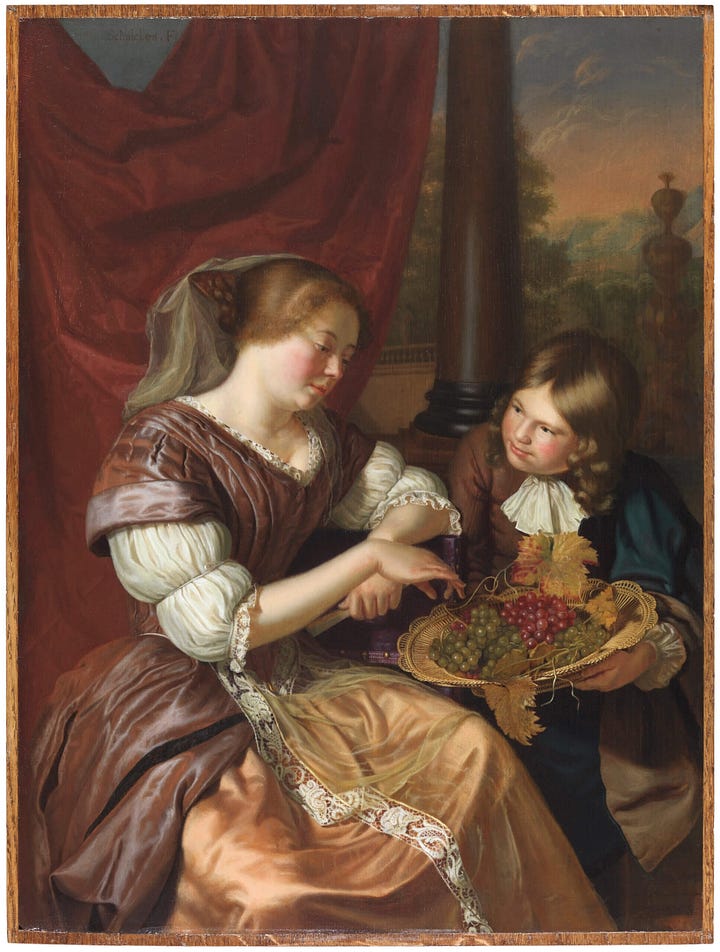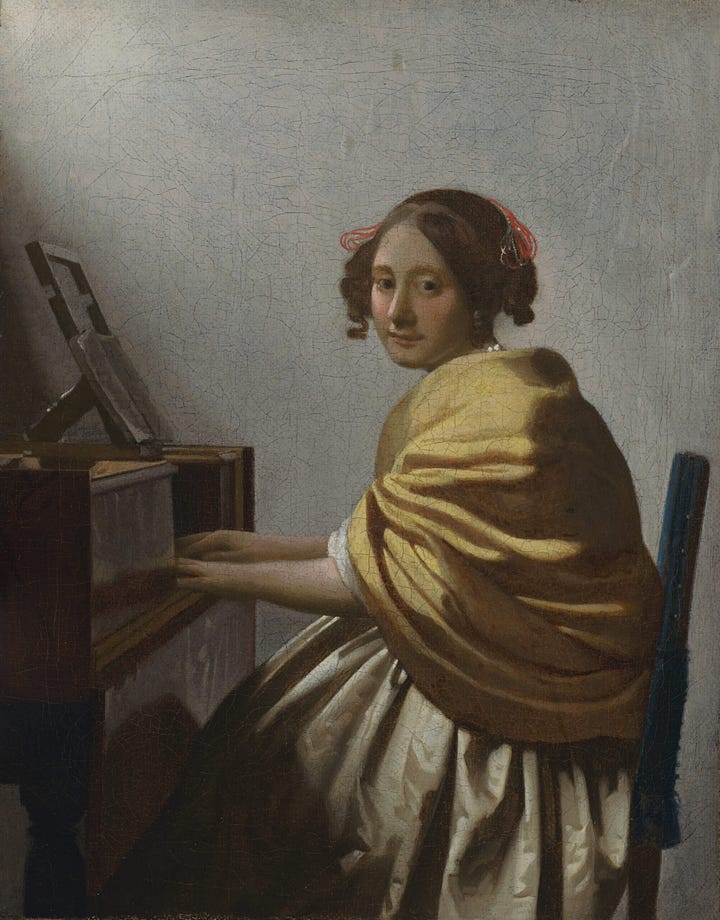Rembrandt Revisited @ H'ART Museum
As my first newsletter instalment, I am discussing the new exhibition at the H'ART Museum, displaying works from the Leiden Collection.
3 minute reading
Two weeks ago I went to the press conference of the new show From Rembrandt to Vermeer, on view at H’ART Museum through August 24, 2025. The exhibition boasts 75 works of 27 artists from the so-called Dutch Golden Age owned by the Upper East Side collectors Thomas S. Kaplan and Daphné Recanati-Kaplan.
For avid fans of Dutch Old Masters, this marks the second time the H’ART Museum in Amsterdam (formerly the Hermitage Museum) has hosted an exhibition composed entirely of works from the Leiden Collection. This latest presentation coincides with the 750th anniversary of the City of Amsterdam and, as Kaplan himself noted, reflects the idea of a concrete and poetic homecoming for many of the artworks.
The entire exhibition seems to rest on the notion that it is a rare and extraordinary privilege to once again see these masterpieces in Amsterdam—works that long ago left the Low Countries and eventually passed into private collections, most recently into the hands of the Kaplans. That brings me to my main point of criticism of such a type of show: its curatorial concept is virtually absent, creating merely a pretext for the private collector’s bravado.
What can you see in the show?
There is no discussion over the fact that the richness and quality of the works comprised in the Leiden Collection is unparalleled. Started in 2003, the collection prides in 220 paintings and drawings and represents one of the largest and most prominent selections of Dutch seventeenth-century works owned privately.
Names like Rembrandt and Vermeer (in fact, the last Vermeer owned by an individual) are accompanied by other grand figures such as Frans Hals, Jan Lievens, Gerrit Dou, Jan Steen, Gerard ter Borch, and, of course, the list goes on. The collection, naturally, reflects the taste of its holder(s): the backbone of the assemblage is the focus on the human figure. So far, so good, isn’t it?


What is not to like, then?
The Leiden collection is what we call a ‘lending library’. The Kaplans started collecting in 2003, and then, during the financial crisis of 2007-2008, went on a shopping spree of any available Dutch Old Master on the market that matched their taste. Kaplan recollected that at a given time, they were purchasing one Rembrandt per week —hard to be a billionaire, huh?
In 2012 the collection became public and debuted in a large-scale itinerant tour, starting in the Louvre Museum and travelling as far as Abu Dhabi, Beijing, Moscow and other hot locations. Some of its lending projects are discreet, subsumed in the project of any given exhibition (i.e. the Vermeer retrospective last year), while others are cruised, most often, under the theme of ‘Rembrandt and His Time: Masterpieces from The Leiden Collection’.
We can, then, raise the question: what is wrong with that? Some could say wholeheartedly, including the organisers of the From Rembrandt to Vermeer project, nothing wrong! what a privilege and a pleasure! what a rare occasion to marvel at the New York owned collection of rare Old Masters!
I had some different thoughts while listening to Kaplan reciting the story of the Leiden Collection (btw, the title is an homage to Rembrandt’s hometown). First of all, the concept of the exhibition was loose, to say the least:
‘The exhibition focuses on the daily life and character of Dutch citizens in seventeenth-century Amsterdam as well as other urban centers in the Netherlands. Organised thematically, From Rembrandt to Vermeer draws from The Leiden Collection’s unique strength, namely the depiction of humanity in all its facets.’
Usually, loans for an exhibition are conceived via the curatorial concept. In this case, the curatorial concept is merely an after-thought, crafted by H’ART’s curator Birgit Boelens and Leiden Collection’s curator Elizabeth Nogrady. As an art historian, I am not sure such a project sends the right message to the public of art lovers.


Second of all: In an era were we witness dramatic cuts to culture funding, the increasing reliance on philanthropy is to be expected. However, such a project is a preview to a bleak future where content will suffer under the financing duress, and where the educational mission of museums would be a secondary pursuit in the face of the private sponsor.
During the tour with Kaplan, I could undoutedly see his genuine passion and deep knowledge of Rembrandt, first and foremost, and to a great extent of many other Dutch masters.
Yet, I could not stop thinking about the awkward position of the curator of H’ART Museum, having to scramble a legible story, moulded by the intransigent conceit of the owner’s private vision of Rembrandt, Vermeer, Hals, and all the others. I found that selfish, illiberal and anachronistic, especially after having found out that Thomas Kaplan substantially sponsored the museum’s transition from Hermitage to H’ART.
While there are plenty of collectors of art that want the best outcomes for their loans to museums, this particular instance was a harder pill to swallow.
About the Doctrinaire newsletter:
I created Doctrinaire as a directory of my personal opinions. As an independent art historian living and working in the Netherlands, I figured I could better formulate opinions about the main art events in the region if I do it in writing.
If you are curious about exhibitions, festivals or other cultural events happening in the Netherlands, consider subscribing to my newsletter and lending an ear to my recommendations. I will publish every two weeks.
See you!





